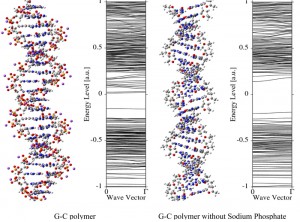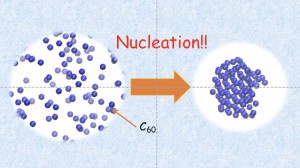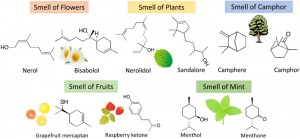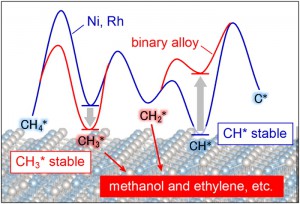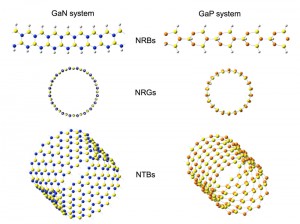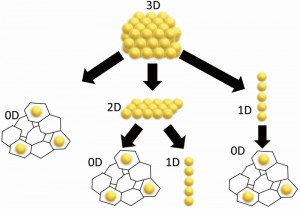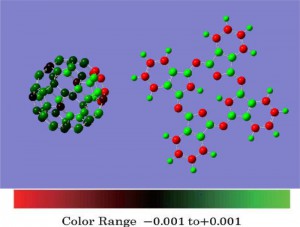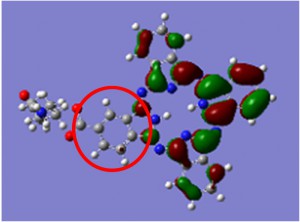[Published online Journal of Computer Chemistry, Japan Vol.16, 157-159, by J-STAGE]
<Title:> DNAの電子状態計算
<Author(s):> 寺前 裕之, 青木 百合子
<Corresponding author E-Mill:> teramae(at)gmail.com
<Abstract:> As an electronic structure calculation of the B-type model-DNA, the calculation of (poly-(guanine) poly-(cytosine)) model polymer is performed by means of the ab initio crystal orbital method adapting the screw axis-symmetry which results in great reduction of computational efforts. All sugar backbones and sodium phosphate are included in the calculations. Energy band structures are calculated at the 6-31G level. For a comparison, the calculation without sodium phosphate is also performed. The resultant energy band structure is very different from that of the original one and it should be concluded that the alkali phosphate is necessary to describe the electronic structure of model-DNA.
<Keywords:> Crystal orbital method, Screw-axis symmetry, B-type DNA, Parallel processing, Energy band structure
<URL:> https://www.jstage.jst.go.jp/article/jccj/16/5/16_2017-0052/_html/-char/ja/
<Title:> DNAの電子状態計算
<Author(s):> 寺前 裕之, 青木 百合子
<Corresponding author E-Mill:> teramae(at)gmail.com
<Abstract:> As an electronic structure calculation of the B-type model-DNA, the calculation of (poly-(guanine) poly-(cytosine)) model polymer is performed by means of the ab initio crystal orbital method adapting the screw axis-symmetry which results in great reduction of computational efforts. All sugar backbones and sodium phosphate are included in the calculations. Energy band structures are calculated at the 6-31G level. For a comparison, the calculation without sodium phosphate is also performed. The resultant energy band structure is very different from that of the original one and it should be concluded that the alkali phosphate is necessary to describe the electronic structure of model-DNA.
<Keywords:> Crystal orbital method, Screw-axis symmetry, B-type DNA, Parallel processing, Energy band structure
<URL:> https://www.jstage.jst.go.jp/article/jccj/16/5/16_2017-0052/_html/-char/ja/
